If you’ve been following my social media exploits, you’ll recognize some of these trees. If not, why not? I’m twice as clever over on the Instabooks and the Face-a-gram, not to mention I’m a big Twit when I tweet.
Let’s introduce today’s cast of trees.
Green island ficus on the left, winged elm on the right 
And a ficus microcarpa (that looks like it’s being molested by Jose) 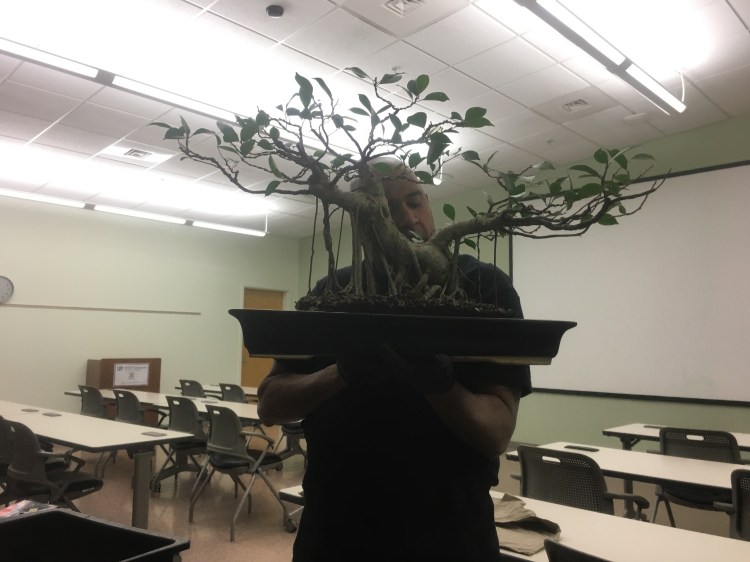
Where to begin? Let’s start with the tiger bark…. It’s in an exceptionally shallow pot. The problem with that is it hasn’t grown in the two years I’ve had it (you can read about its beginnings in this post: Bonsai will be the death of me) after reading that you can see how little it’s developed. There were some branches that died back, and it put on new leaves and all, but not much in the way of serious growth.
It’s in an exceptionally shallow pot. The problem with that is it hasn’t grown in the two years I’ve had it (you can read about its beginnings in this post: Bonsai will be the death of me) after reading that you can see how little it’s developed. There were some branches that died back, and it put on new leaves and all, but not much in the way of serious growth.
The solution: a more reasonable pot depth. Although it’s obvious a ficus can survive in a pot like this (they can be epyphitic after all, most ficus are strangler figs) it’s not ideal for developing a bonsai.
So, with that, pot #1  A blue glazed oval or, pot #2….
A blue glazed oval or, pot #2….
 an older Japanese, unglazed green clay oval.
an older Japanese, unglazed green clay oval.  Tough choice, right?
Tough choice, right?
Let’s look at the roots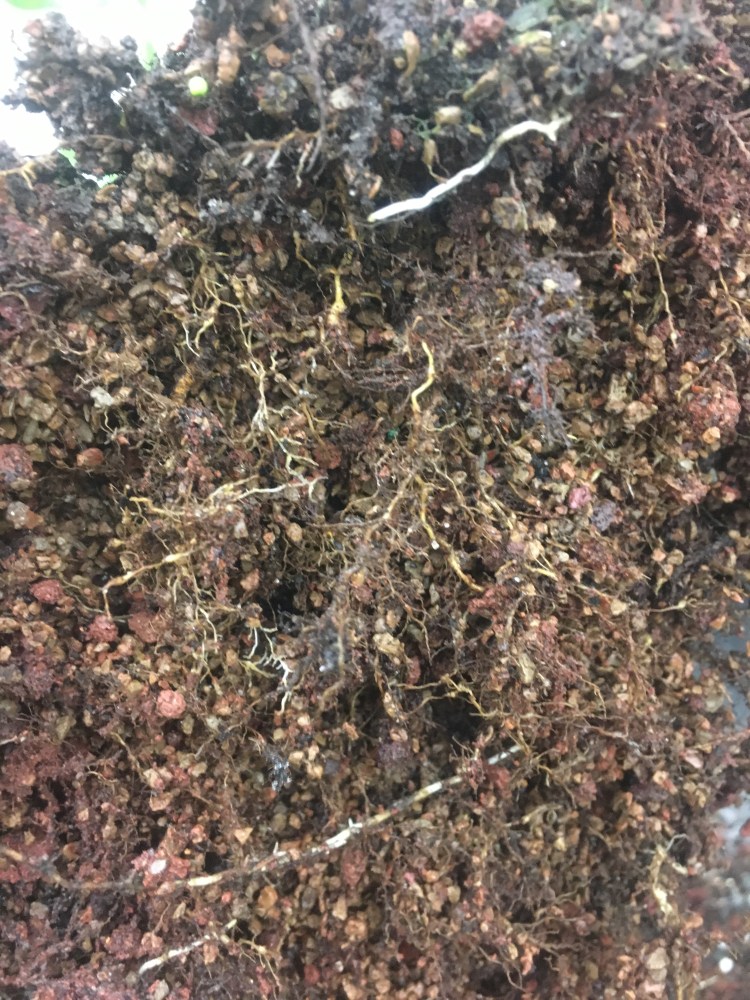 Not bad, some fibrous.
Not bad, some fibrous.  The soil mass was just about a half inch thick.
The soil mass was just about a half inch thick.
The mix looks like a fine, unsifted mess 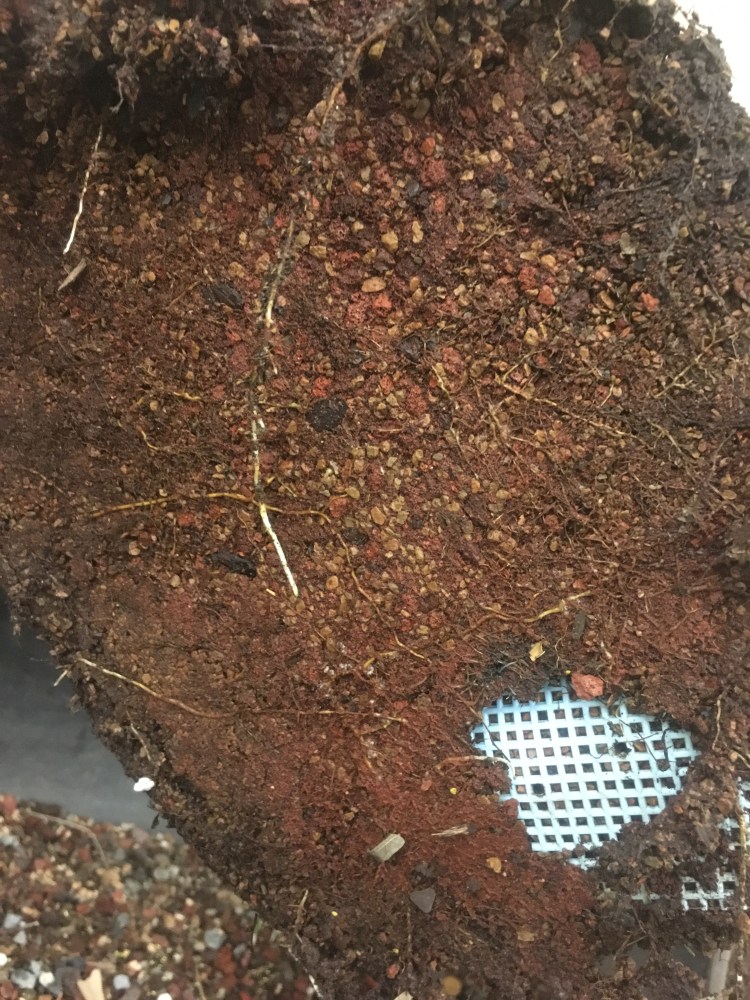
See all the red sludge? That’s why you need to wash your scoria, it’s usually full of dust.  Needless to say, I didn’t have to root prune much. But you’ll have to wait until the end to see which pot I chose.
Needless to say, I didn’t have to root prune much. But you’ll have to wait until the end to see which pot I chose.
Next we have a winged elm (wanged elm, if you would)
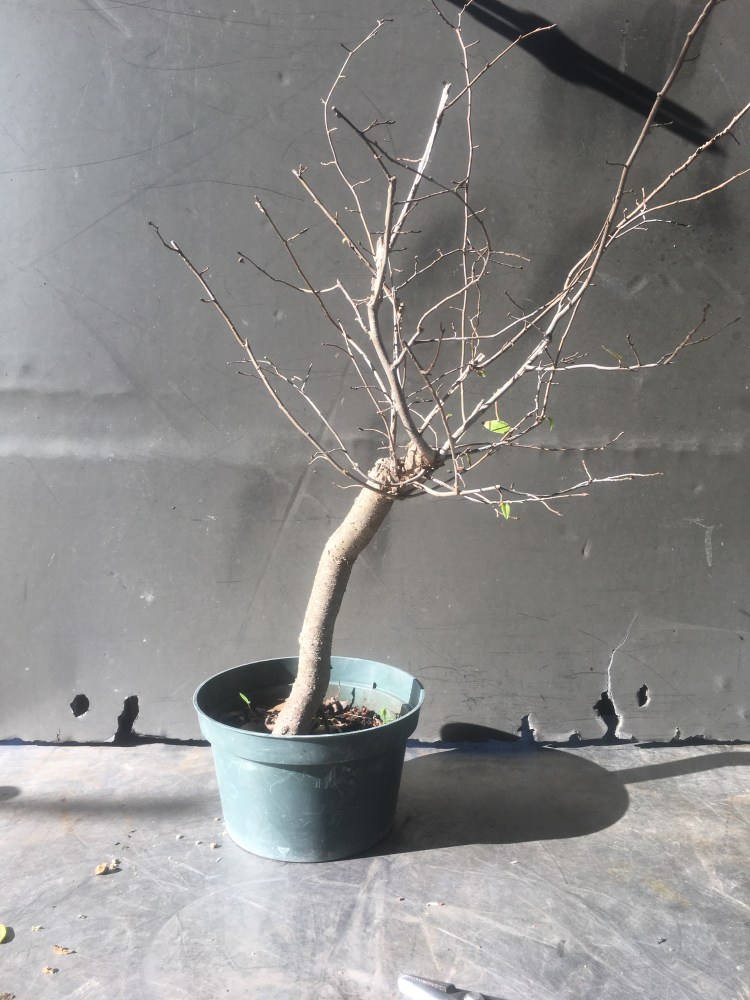
Kinda cool trunk, it’s actually a root cutting, 
One thing I’d like to mention, you don’t have to bareroot a tree the first time it goes into a bonsai pot. 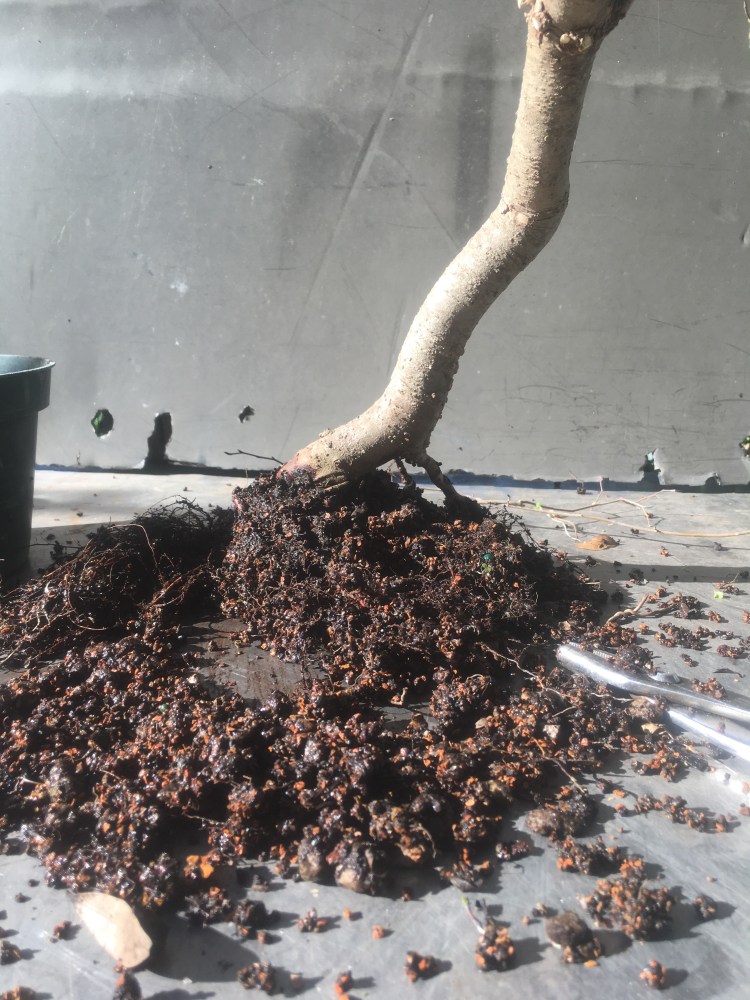 In fact, I’m with Boon, maybe remove only half of the old soil. My strategy is to begin with the old soil under the trunk base. That’s the critical area in the root zone of either being too wet or too dry. If you get a good mix in there first, it’s easy to replace the periphery.
In fact, I’m with Boon, maybe remove only half of the old soil. My strategy is to begin with the old soil under the trunk base. That’s the critical area in the root zone of either being too wet or too dry. If you get a good mix in there first, it’s easy to replace the periphery.
I love this pot, made by a Southwest Florida hobbyist, Lyn Baker. He’s very precise when calling himself a hobbyist too.  Sometimes, the best art is created by those not interested in making a living at their art. There’s no compromise that way. When you start doing art for sale, you begin to tell yourself, this is the customers want it, it’ll sell, instead of doing what’s right for the piece.
Sometimes, the best art is created by those not interested in making a living at their art. There’s no compromise that way. When you start doing art for sale, you begin to tell yourself, this is the customers want it, it’ll sell, instead of doing what’s right for the piece.
Looks good in it.  Now for wire and……you guessed it, you’ll have to wait until the end.
Now for wire and……you guessed it, you’ll have to wait until the end.
My usual technique, defoliate for growth and wiring ease. 
I leave the petiole intact of course. 
It has good branching already.  Its new pot, a Japanese production pot.
Its new pot, a Japanese production pot.

On some places, I wire for better coverage of the wire, to decrease the possibility of breakage when bending. 
Some places I do it the “pretty” way, just to show I can. Bonsai critics are so mean, you know. Sniff…..
Oh, before I wired, I dressed this chop mark….
The before… ….basically, you take a sharp razor and score the edges of the wound. And you remove any decayed wood.
….basically, you take a sharp razor and score the edges of the wound. And you remove any decayed wood.
Then, on this type of tree, with this large of a wound, I decided to cover it with that, oh-so-trendy material all the cool kids are using nowadays, duct caulk (or plumbers caulk, or electricians caulk. It’s easy to find, just go into the Home Depot and ask one of the workers, “hey, I’m looking to get my hands on some plumbers caulk. If you don’t have that, I’ve heard that electricians caulk is just as good for filling holes……..”) 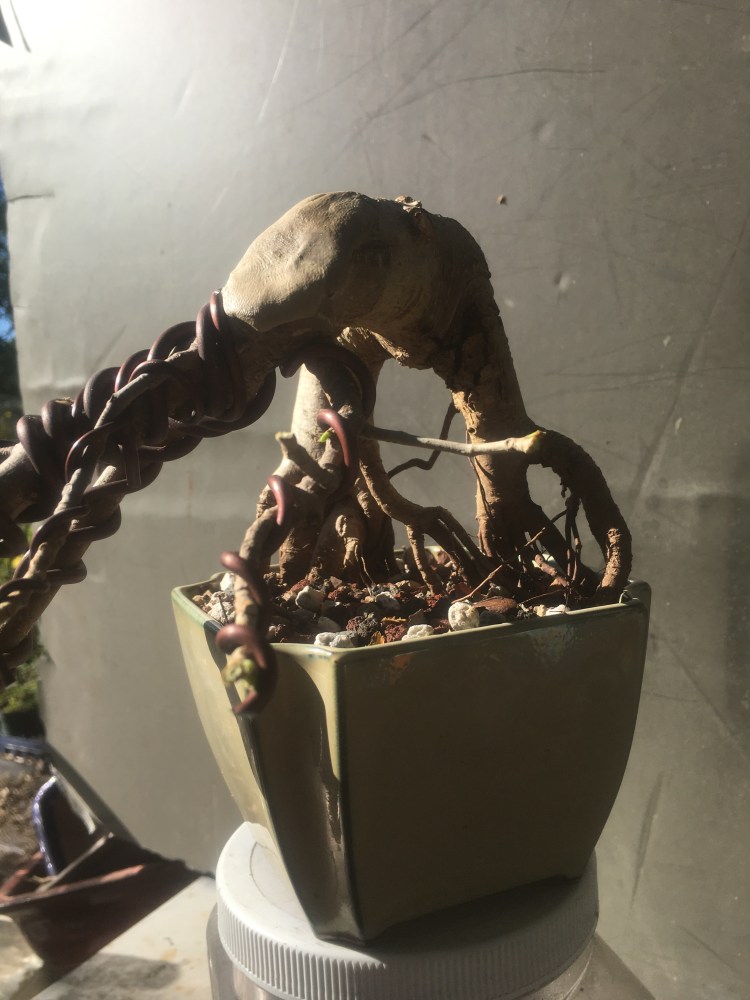 And…….of course you get to wait until the end for the finished tree. No scrolling down, I have a program installed that lets me know if you do, and I’ll ban you quick.
And…….of course you get to wait until the end for the finished tree. No scrolling down, I have a program installed that lets me know if you do, and I’ll ban you quick.
For those curious, my new mix, as of today, is: red and black lava rock (scoria), calcined clay, expanded slate, pumice, and sifted, composted pine bark. The ratio is still 2:1:1:1:1 (the lava I count as one component). I call it the Red, White, and Blue SuperMix®. Look for it soon! 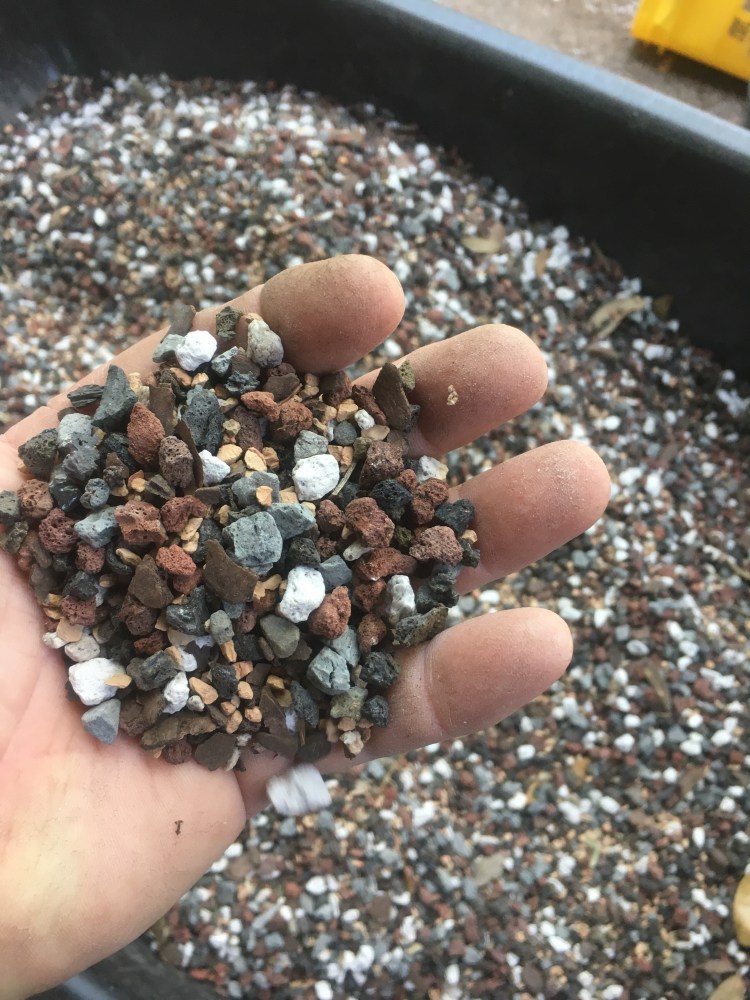
Here’s the f. salicaria root cutting. 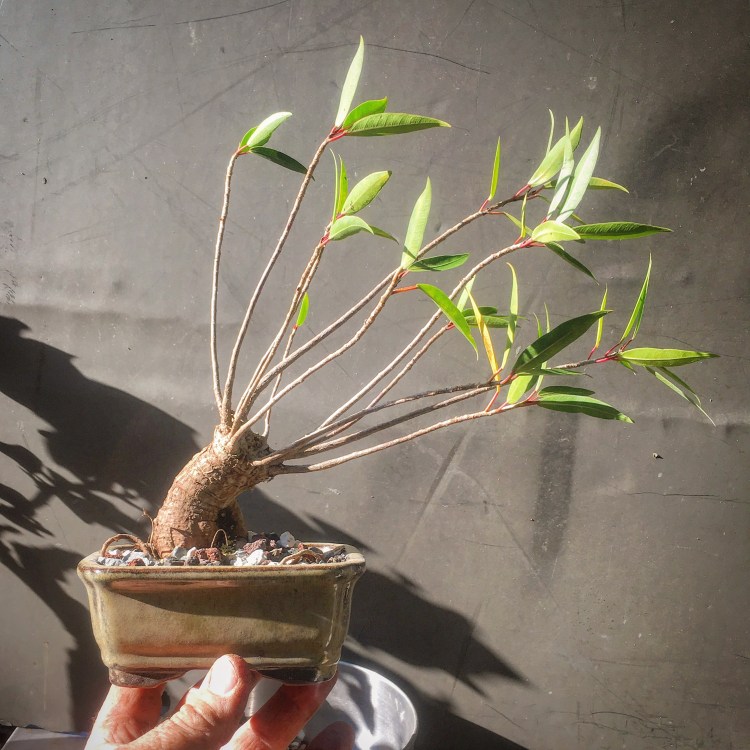 In a pot.
In a pot.
Now for the ficus microcarpa. The choices are, this pot:
Here’s a look at its development from last year.


I chose the unglazed rectangle. 
Jose wanted the blue glazed rectangle. Sorry pendejo.  Ha hah!
Ha hah!
Now, for the reveals!
Tiger bark ficus: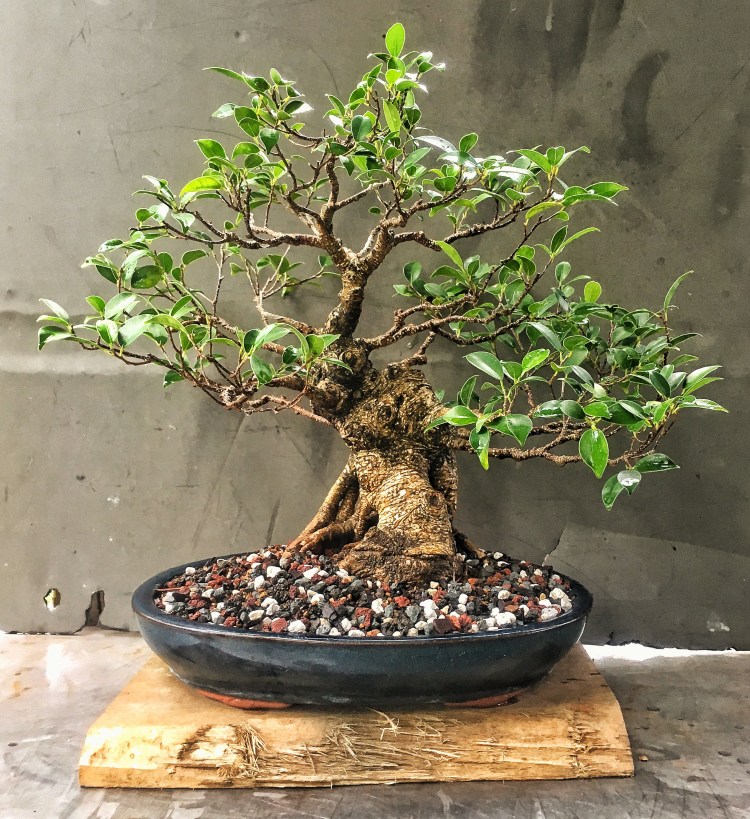 I went with the deeper glazed oval. It needs the room to grow. No wiring yet, maybe in a month or so.
I went with the deeper glazed oval. It needs the room to grow. No wiring yet, maybe in a month or so.
Winged elm: I know, kinda odd, but wait until it fills in.
I know, kinda odd, but wait until it fills in.
Ficus salicaria root cutting: It’s going to stay just like that for a while. When I posted it on those social media sites, it was like the bonsai people turned into bonsai styling fascists. They insisted I cut it back to one or two branches, fit it into a mold, use a cookie cutter to make it look like they thought it should. So, in the spirit of discomfort and annoyance, I shall keep it as thus, for a while.
It’s going to stay just like that for a while. When I posted it on those social media sites, it was like the bonsai people turned into bonsai styling fascists. They insisted I cut it back to one or two branches, fit it into a mold, use a cookie cutter to make it look like they thought it should. So, in the spirit of discomfort and annoyance, I shall keep it as thus, for a while.
Next, last, the cascade green island ficus:
I like this one best, it’s so unusual and the structure is complex, more than just a single cascading “tail”. The exposed roots, the angle of the potting and the front. Even the contrast between the refined pot and the wildness of the tree.
I like it!
I think the next post might hit on some more trident maple grafting. What do you think?
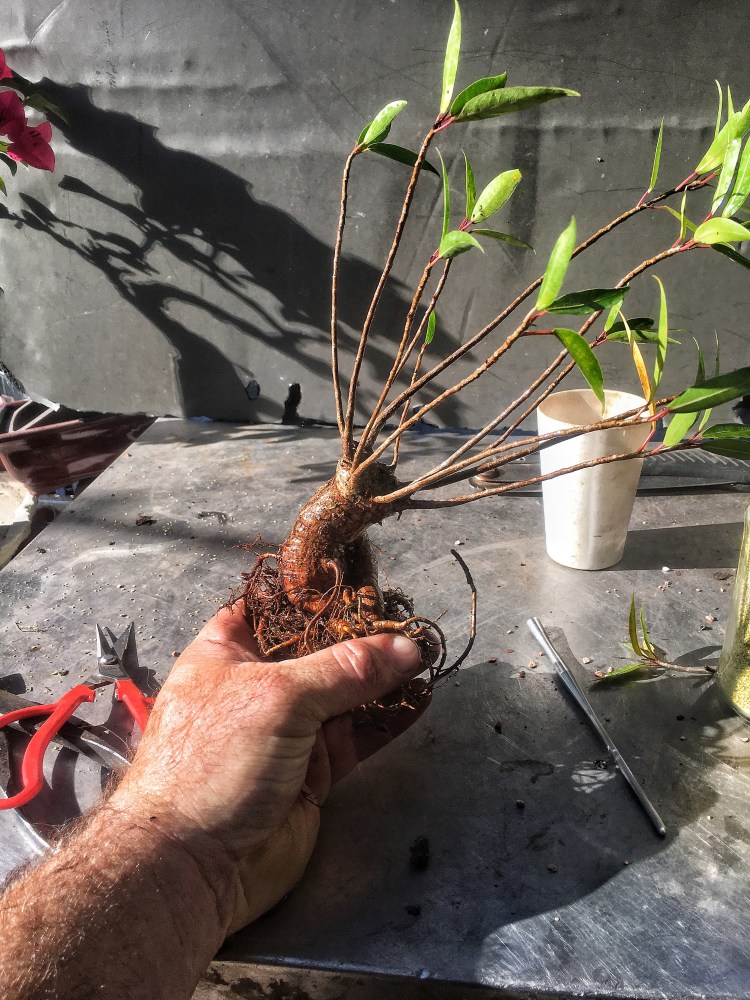




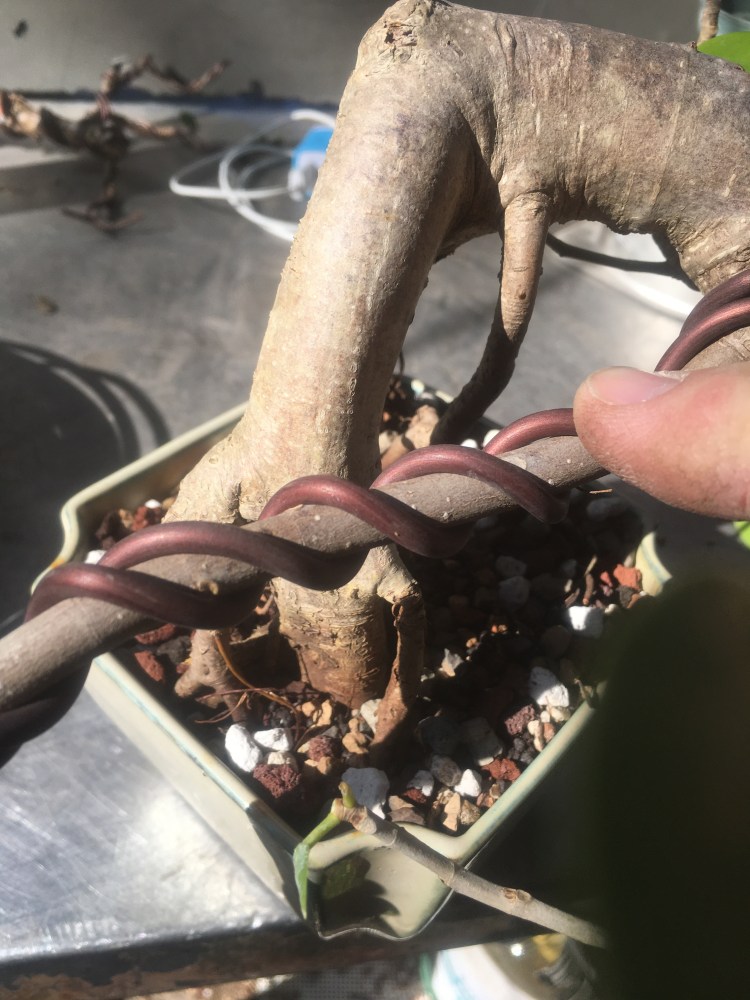


Reblogged this on Wolf's Birding and Bonsai Blog.
LikeLike
Oh no, the butthole style causing others discomfort? Can’t wait for the Trident Maple post. Those are my favorite trees.
LikeLike
Just curious. Have you styled the salicaria root cutting yet?
LikeLike
That’s the same tree in this post from a few weeks ago
https://adamaskwhy.com/2020/07/01/a-bonsai-tree/
LikeLike